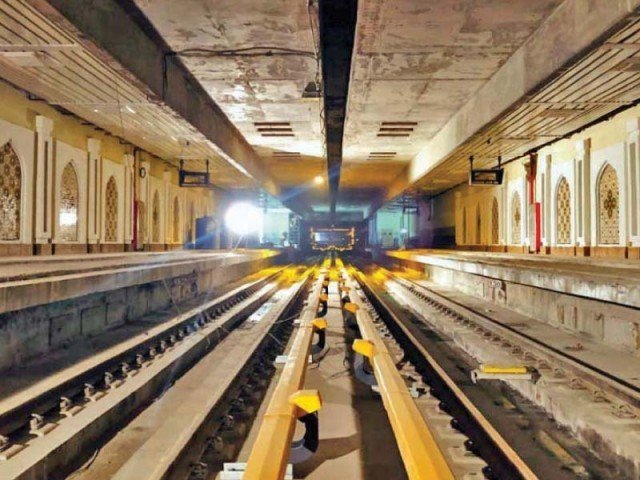
Losses of the Orange Line Metro Train (OLMT) service have increased because of lack of buses on feeder routes and availability of other public transport vehicles along the track.
The train service appears to be becoming a burden on the provincial ex cheaper due to its use by 60% less passengers than capacity.
So far, Rs282 million worth of fare has been collected from over Rs7 million passengers of Orange Line train that has consumed electricity costing Rs353 million.
As the deficit widened, Mass Transit Authority officials suggested reduction of the train fare to attract more passengers. However, the Punjab transport minister rejected the proposal.
The metro train service’s financial deficit started increasing due to a decrease in the number of passengers. After the decrease in the number of passengers on the Orange Line train, Mass Transit Authority officials proposed a reduction of Rs10 in the fares. The number of passengers on the Orange Line Metro Train is less than expected partly due to the coronavirus and private transport running along the track.
Sources said that in a briefing given to the Chief Minister’s Adviser Dr Salman Shah, the Mass Transit Authority said the fare should be reduced by Rs10.
It was disclosed during the briefing that the number of passengers on the Orange Line train was decreasing instead of increasing and the daily target had not been achieved. The Mass Transit Authority proposed a decrease in the fare of the Orange Line train from Rs40 to Rs30. The sources said the chief minister would also be informed about the proposal.
According to the documents covering the period from October 25, 2020 to February 3, 2021, a total of 7,005,894 passengers travelled on the Orange Line Metro Train. The train service earned Rs282,300,578 in fare.
It consumed electricity worth Rs353,539,837 between July last year and January.
Between October 25 and October 31, 529,680 passengers travelled on the Orange Line train, followed by 2,060,062 in November, 2,155,036 in December and 2,261,116 in January.
The higher expenses on electricity as compared to the revenue have caused concerns among the relevant officials about the financial burden of the project.
According to the documents, the Lahore Electric Supply Company (LESCO) charged the project over Rs353 million between July 2020 and January 2021. The Orange Line train earned Rs282 million from the passengers.
Other expenses on the metro train service are not included in the figure.
The feasibility report of the train project included operating 180 buses on 11 feeder routes.
However, the transport department could not run buses on the feeder routes to facilitate the passengers of Orange Line train.
Mass Transit Authority officials had also asked the department to shut down private transport services along the train tracks, but the advice was not implemented.
When contacted, Punjab Transport Minister Muhammad Jahanzeb Khan Khichi asserted that reducing the fare could not help increase the revenue.
He said that according to the feasibility report, up to 250,000 passengers were supposed to travel in the train daily but the current situation was very disappointing.
The minister said the Orange Line train was already being run on subsidy. “In the prevailing circumstances, there are no funds to run separate buses on feeder routes. We are revising the routes of 200 buses of the Speedo service,” he said.
With the move, the Speedo bus service may cover the feeder routes of Orange Line train along with Metrobus.
The minister termed the proposal of the Mass Transit Authority to reduce the fare of the train from Rs40 to Rs30 as unworkable. He said none of the plans put forward by the officials of the Mass Transit Authority had brought the desired results. The proposal would be implemented only if the officers proposing the decrease in fares guaranteed an increase in revenue and the number of passengers, he added.
Published in The Express Tribune, February 5th, 2021.



1729080111-0/BeFunky-collage-(63)1729080111-0-165x106.webp)
1730838202-0/Trump-(1)1730838202-0-165x106.webp)













COMMENTS
Comments are moderated and generally will be posted if they are on-topic and not abusive.
For more information, please see our Comments FAQ